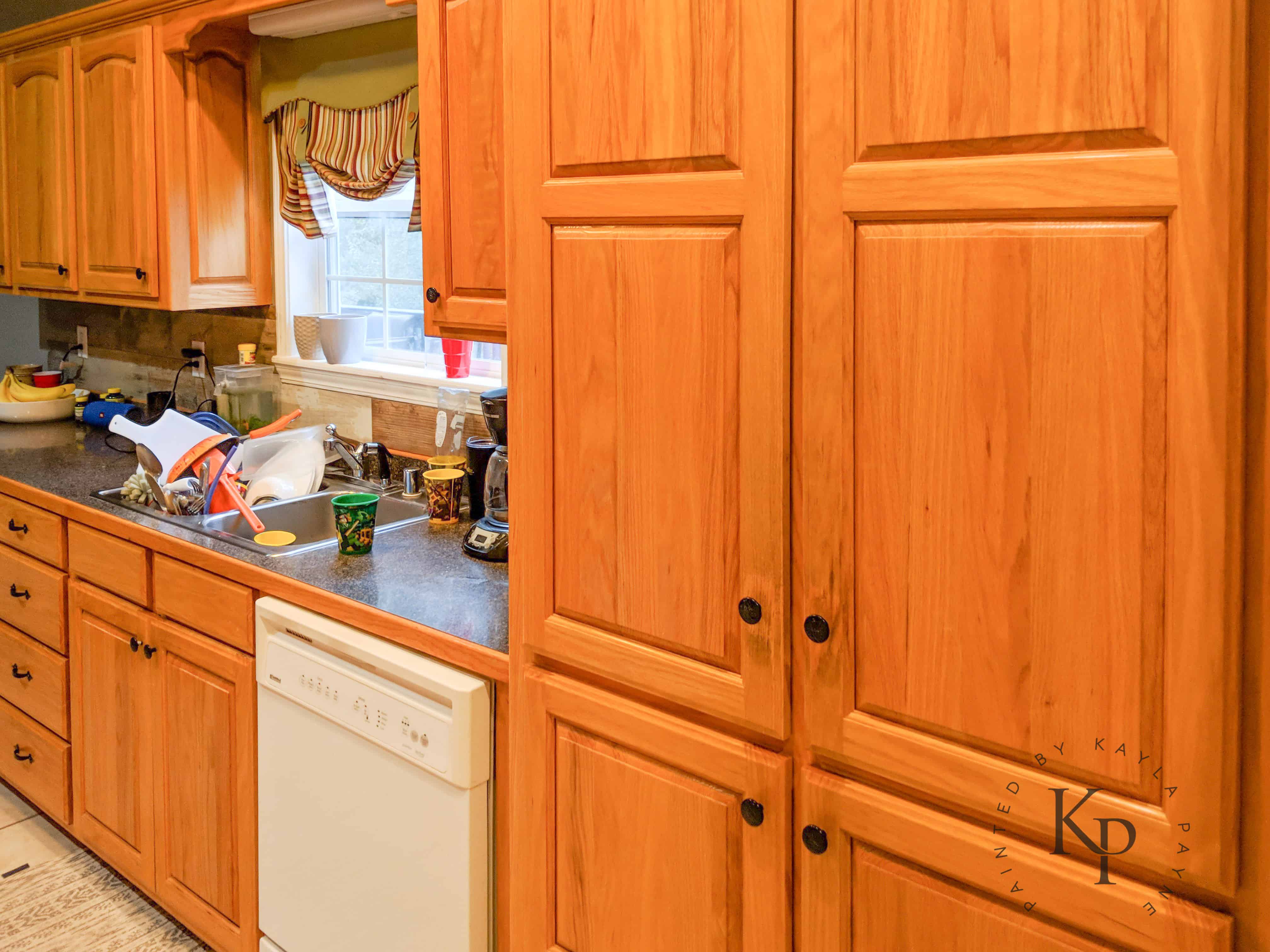Preparing the Cabinets: How To Make Brown Cabinets White

A thorough preparation process is crucial for achieving a smooth and long-lasting paint finish on your cabinets. Cleaning and sanding the surfaces effectively remove dirt, grease, and imperfections, ensuring the paint adheres properly.
Cleaning the Cabinets
Before sanding, it’s essential to clean the cabinets thoroughly to remove any dirt, grease, or grime that may interfere with the paint’s adhesion.
- Use a mild detergent and warm water to wash the cabinet surfaces. Avoid using harsh chemicals or abrasive cleaners, as they can damage the wood.
- Wipe the cabinets dry with a clean cloth, ensuring all surfaces are completely dry before proceeding to the sanding step.
Sanding the Cabinets
Sanding the cabinets is an important step in preparing them for painting. It creates a smooth surface for the paint to adhere to and helps to remove any imperfections or previous coatings.
Types of Sandpaper
Different types of sandpaper are used for various purposes in cabinet preparation:
- Coarse-grit sandpaper (80-120 grit): Used for removing old paint, varnish, or other coatings. It’s also used to smooth out rough surfaces or large imperfections.
- Medium-grit sandpaper (150-220 grit): Used for smoothing out minor imperfections and preparing the surface for a final sanding.
- Fine-grit sandpaper (220-400 grit): Used for a final sanding to create a smooth, even surface that will provide a good base for the paint.
Sanding Process
Sanding the cabinets involves using sandpaper to smooth out the surface and remove any imperfections.
- Start with a coarse-grit sandpaper (80-120 grit) to remove any old paint, varnish, or other coatings.
- Work in the direction of the wood grain to avoid creating scratches.
- Sand until the surface is smooth and even.
- Gradually transition to a medium-grit sandpaper (150-220 grit) to further smooth the surface.
- Finish with a fine-grit sandpaper (220-400 grit) to create a smooth, even surface for painting.
- Wipe the cabinets clean with a damp cloth to remove any sanding dust before proceeding to the painting stage.
Tip: Use a sanding block to ensure even sanding and prevent uneven pressure that could cause scratches.
Choosing and Applying the Paint

The type of paint you choose for your cabinets will significantly impact the final look and durability of your project. Each paint type has its own unique characteristics and benefits.
Types of Paint
- Latex Paint: Latex paint is water-based and offers several advantages, including easy cleanup with soap and water, low odor, and quick drying time. It is generally considered a good choice for cabinet painting, especially for beginners. However, latex paint may require multiple coats for full coverage and can be susceptible to chipping or scratching, particularly in high-traffic areas.
- Oil-Based Paint: Oil-based paint provides a durable, hard-wearing finish that is resistant to moisture and stains. It offers excellent adhesion and self-leveling properties, resulting in a smooth and even surface. However, oil-based paint requires mineral spirits for cleanup, has a strong odor, and takes longer to dry than latex paint.
- Chalk Paint: Chalk paint is a popular choice for achieving a vintage or distressed look. It is water-based and creates a matte, chalky finish that can be easily layered and distressed. Chalk paint typically requires a sealant for protection and durability.
Choosing the Right White
The ideal white for your cabinets depends on your personal preference and the overall style of your kitchen. Here are some factors to consider:
- Undertones: Whites can have different undertones, such as warm (yellow), cool (blue), or neutral (gray). Warm whites can create a cozy and inviting atmosphere, while cool whites can make a space feel larger and more modern.
- Lighting: The amount and type of light in your kitchen will influence how the white appears. Consider testing different white samples under your existing lighting conditions.
- Existing Decor: Choose a white that complements the other colors and finishes in your kitchen.
Applying the Paint, How to make brown cabinets white
- Primer: Applying a primer before painting is essential for ensuring good adhesion and coverage. Choose a primer specifically designed for cabinets, as it will help to seal the surface and prevent the paint from reacting with the wood.
- Multiple Coats: For a smooth and even finish, apply multiple thin coats of paint rather than one thick coat. Allow each coat to dry completely before applying the next.
- Paint Application Techniques: Use a high-quality paintbrush or roller specifically designed for cabinets. Apply the paint in thin, even strokes, and avoid overworking the paint.
How to make brown cabinets white – Transforming brown cabinets to a crisp white can significantly brighten a kitchen, but maximizing space is crucial. A strategic use of a lazy susan cabinet, as described in this article best use for lazy susan cabinet , can help make the most of corner cabinets.
Once the cabinets are painted, the addition of a lazy susan will ensure that all items are easily accessible, making the transformation even more impactful.
Transforming brown cabinets to a crisp white can significantly brighten a room, but it’s important to consider the overall aesthetic. If space is limited, consider incorporating narrow storage units for bedrooms to create a balanced look. These units can complement the white cabinets while providing additional storage, allowing you to maintain a clean and organized space.
Once you’ve chosen the right storage solution, you can begin the process of painting your cabinets white, ensuring they blend seamlessly with the rest of your decor.
